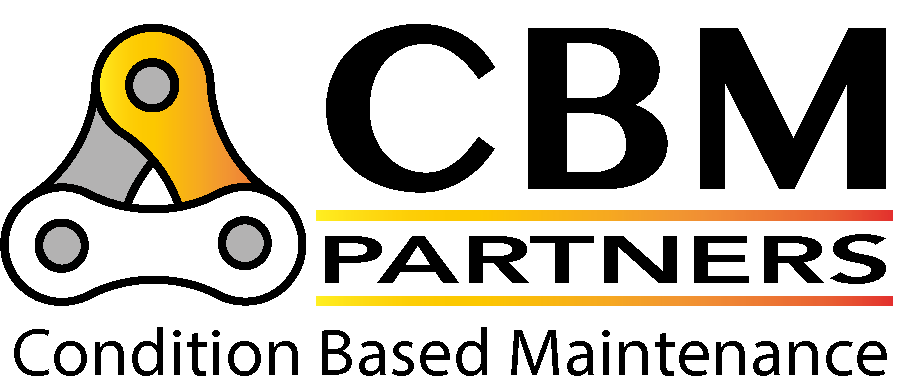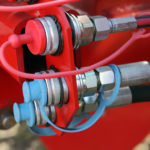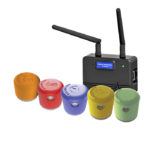
Energy losses often sit quietly in the background of even well-maintained sites and are, more often than not, hidden in pipework, above ceilings or behind panels. They don’t trip alarms so they go unnoticed, but they do steadily drive up costs and emissions.
Here, we’ll look at five common culprits and how thermography can help bring them to light, supporting more focused maintenance and smarter energy audits.
1. Poor Insulation and Building Envelope Gaps
Heat loss through the building envelope is often overlooked because it happens slowly and silently, but the cumulative cost can be significant. Even small gaps in insulation or poorly sealed joints create thermal bridges, allowing heat to escape and driving up heating demand.

In the image above, localised hotspots (32.4 °C) show where heat is leaking through a roof section, contrasting sharply with the cooler surrounding areas (around 26 °C). These are classic signs of missing or degraded insulation.
Left unchecked, such losses can erode building performance. As a rule of thumb, a 10 m² area of poorly insulated roof can waste around £250 – £300 per year in additional heating energy in a typical UK facility. That figure rises steeply for larger areas or older buildings.
Thermography allows these weak points to be identified and prioritised during maintenance planning, before they drive up energy use and carbon output.
2. Steam Trap Failures
A failed steam trap can quietly become one of the costliest energy leaks in a plant. When a trap sticks open, it allows live steam to blow through unchecked. This not only wastes energy but also reduces system efficiency and can increase water hammer and corrosion.
Thermography helps identify these failures early. A correctly operating trap shows a distinct temperature drop as steam condenses to water. A failed-open trap, by contrast, stays uniformly hot along its body and downstream pipework. Spotting these anomalies during a thermal survey allows engineers to intervene before they turn into long-term losses.
While thermography is highly effective, it’s worth noting that ultrasound also has its place in steam trap surveys, as it can detect abnormal discharge patterns and provide complementary confirmation of failures.
Estimated cost impact:
A single failed-open trap can pass around 15–30 kg of steam per hour. Using a typical UK cost of £25 per tonne of steam, that’s:
- 15 kg/h × 8,000 h/yr = 120,000 kg/yr (120 tonnes) approx £3,000 per year
- 30 kg/h × 8,000 h/yr = 240,000 kg/yr (240 tonnes) approx £6,000 per year
On larger networks, a handful of unnoticed failed traps can quietly add tens of thousands of pounds a year to energy costs, all while degrading system reliability.
3. HVAC Inefficiencies
HVAC systems are often among the biggest single energy users on site and small faults can quietly erode their efficiency for months before being noticed. Slipping fan belts, fouled coils, failing bearings and motor imbalances all force the system to draw more power to maintain output.

The image above shows uneven temperature distribution across a coil face, a sign of fouling or blocked airflow. This forces compressors and fans to run longer and harder, lifting power demand. Thermography makes these weaknesses visible at a glance. Once identified, these areas can be prioritised for remediation, reducing waste and improving system efficiency.
Although an exact £ value can’t be put on the above without reference to plant specifics, an air restricted coil with a temperature spread of roughly 22 – 44 °C across a finned surface would typically lift the condensing temperature and knock the system’s COP, costing between 5 – 15% extra electrical energy for the same duty.
4. Electrical Imbalances and Overloads
Electrical systems rarely fail without warning, but the warning is often heat. Loose terminations, phase imbalances, or overloaded circuits all generate excess heat long before they trip breakers or blow fuses. That heat represents not just a safety risk, but wasted energy.

The image above shows one phase running significantly hotter than the others; over 75 °C versus 36 °C. This level of thermal imbalance is typically caused by a loose or oxidised connection, or uneven loading across phases. Both issues drive up resistance, which increases energy consumption and accelerates component wear. More importantly, it’s not easily seen by the naked eye as evidenced in the first image.
Estimated cost impact: A loose or imbalanced connection on a 250 A circuit can increase resistance losses by 0.5 – 1%. If we use a few assumptions around the load (say 60kW average load), operating hours (4,000 operating hours per year) and an average price per kWh of £0.18, this runs to an extra cost of between £216 to £432 per circuit per year.
Of course, this figure excludes the far higher cost of an unplanned failure or fire. Thermography allows these faults to be detected safely under load, without shutting down equipment.
5. Compressed Air Leaks
It’s common knowledge that compressed air is one of the most expensive utilities to produce on site and one of the easiest to waste. Even small leaks in pipework, couplings or valve bodies can add up to substantial energy loss, often without triggering alarms or pressure drops until the problem is widespread.
While leaks are more often confirmed using ultrasonic detection, thermography can help guide surveys by showing localised cooling from the expanding air jet around fittings and joints. This speeds up inspections and helps target maintenance effort where it’s needed most.
Estimated cost impact:
A single 3 mm leak at 7 bar can waste approx 3.5 kW of compressor power continuously.
Assuming:
- 3.5 kW load
- 4,000 hours/year
- £0.18/kWh
Cost = 3.5 × 4,000 × 0.18, or around £2,520 per year per leak
Multiply that by multiple small leaks across a site, and it’s easy to see why the Carbon Trust estimates that compressed air leaks typically waste 20 – 30% of total air production in older systems.
Seeing the Ghosts: Hunting Down the Invisible Costs
Each of these five issues, from insulation gaps to air leaks, chips away at efficiency, often unnoticed until the costs have stacked up. Thermography gives CM Technicians and Engineers a way to see where that energy is being lost, without taking systems offline or waiting for faults to escalate.
Used as part of a wider condition-based approach, it helps maintenance teams target effort where it delivers the most benefit, and gives procurement teams clear evidence for investment decisions.




